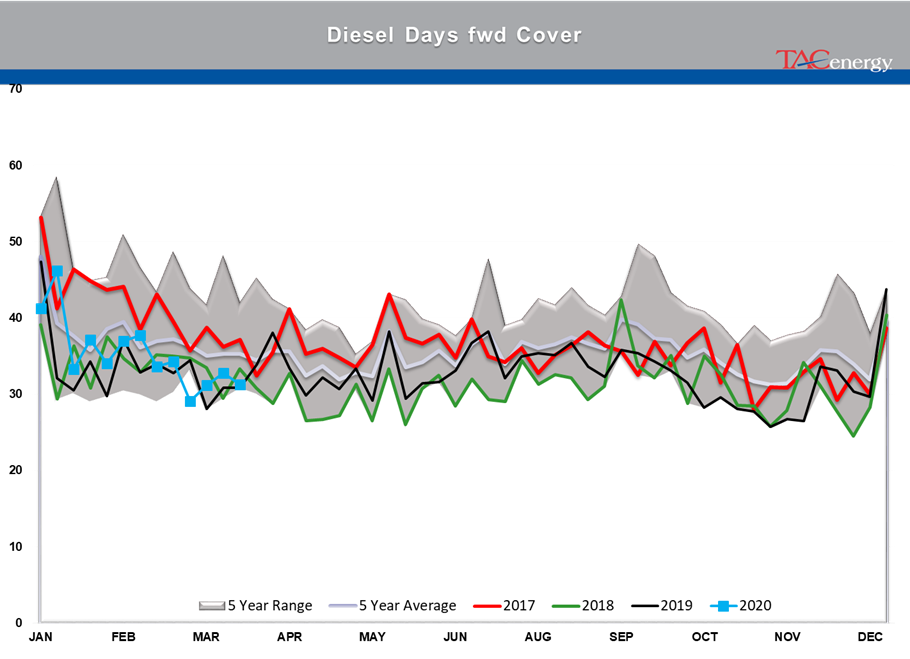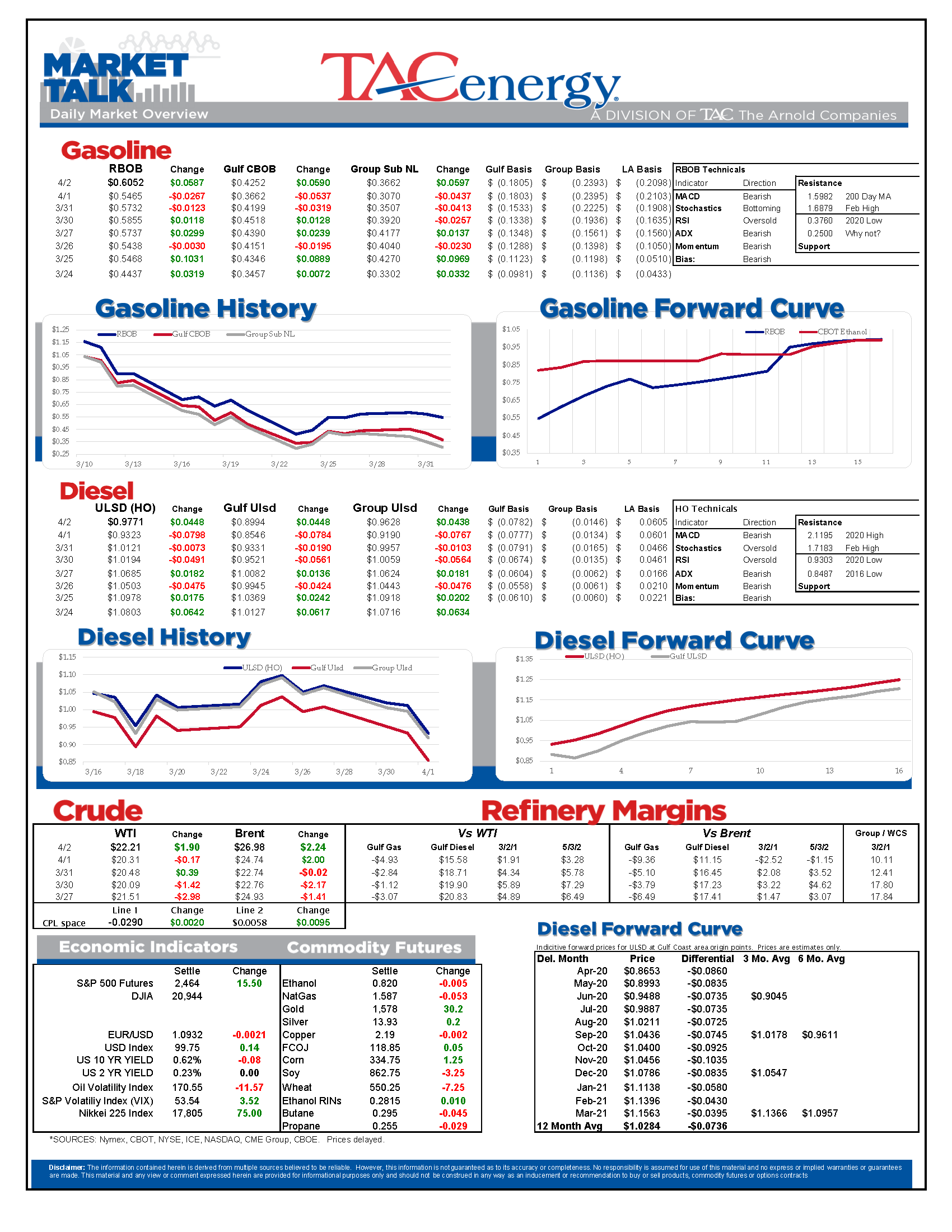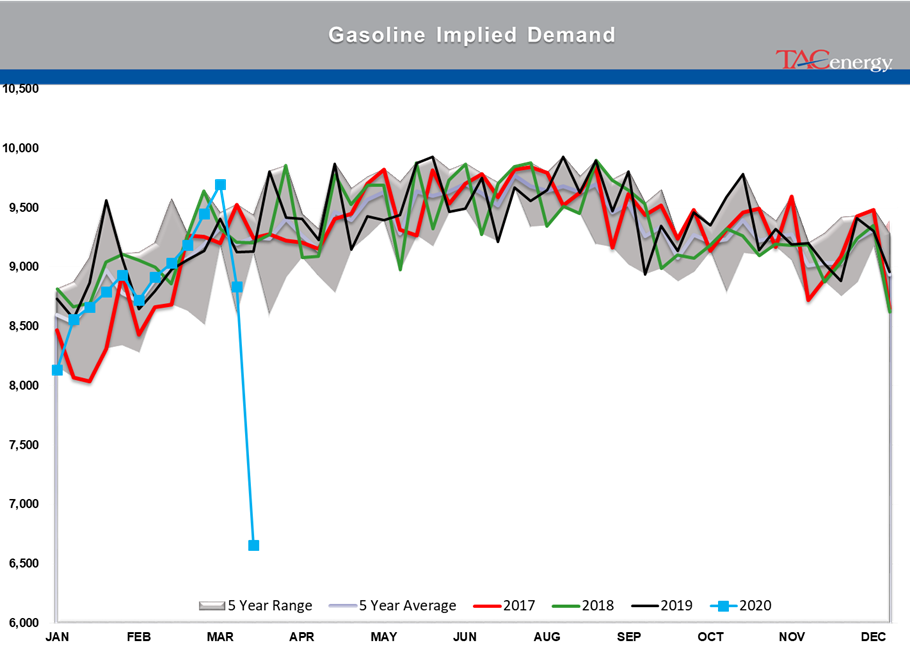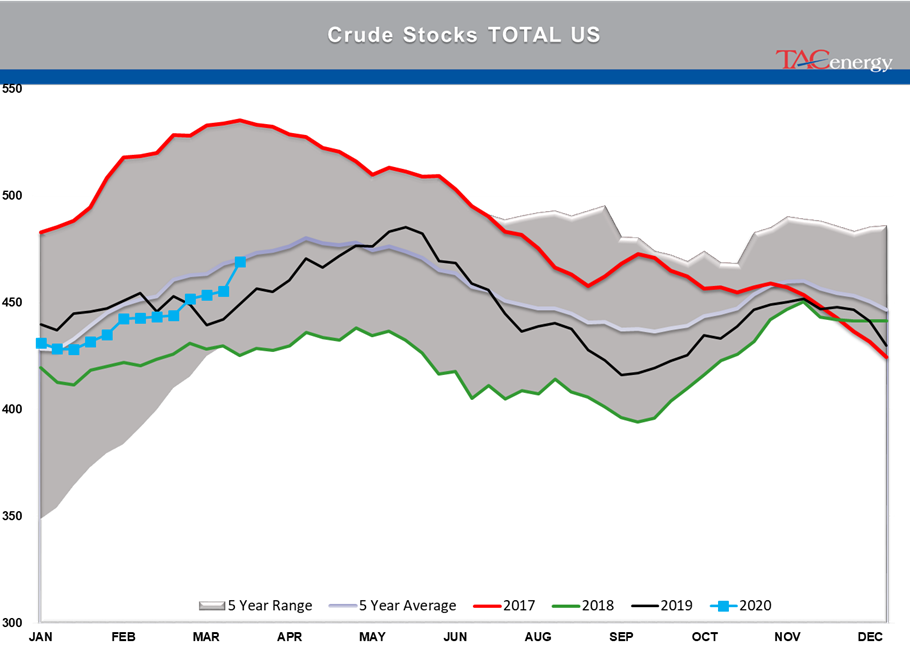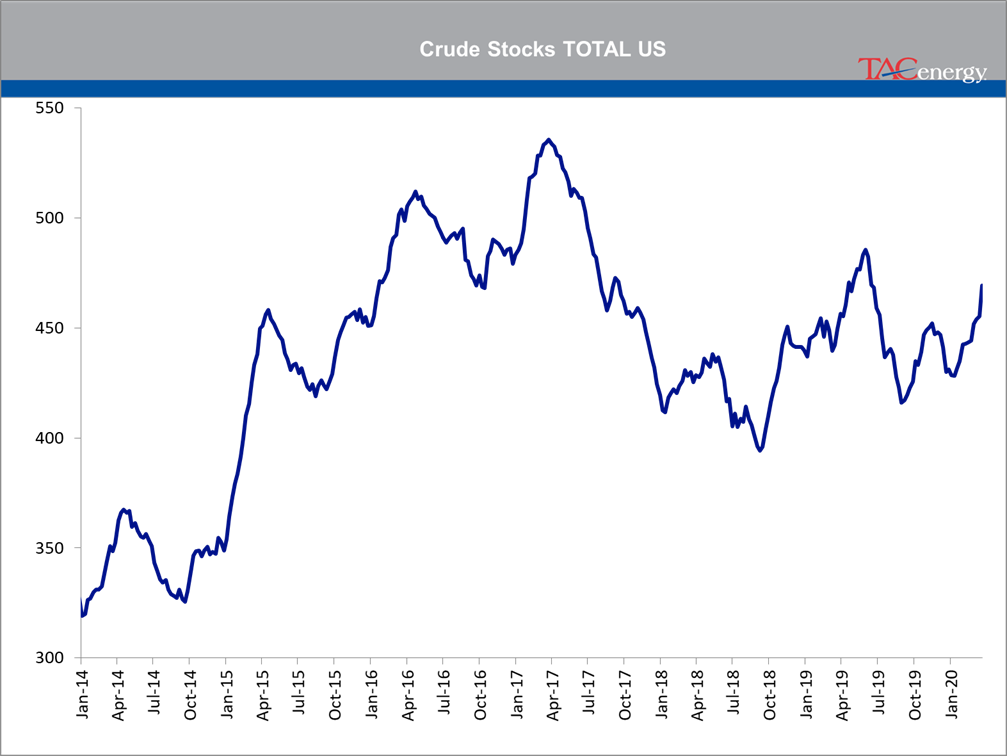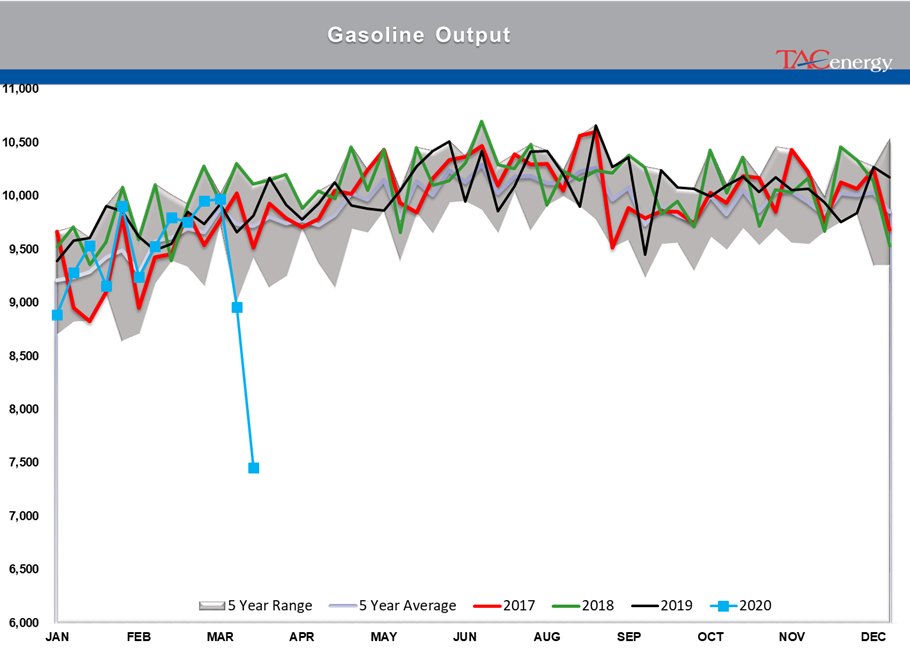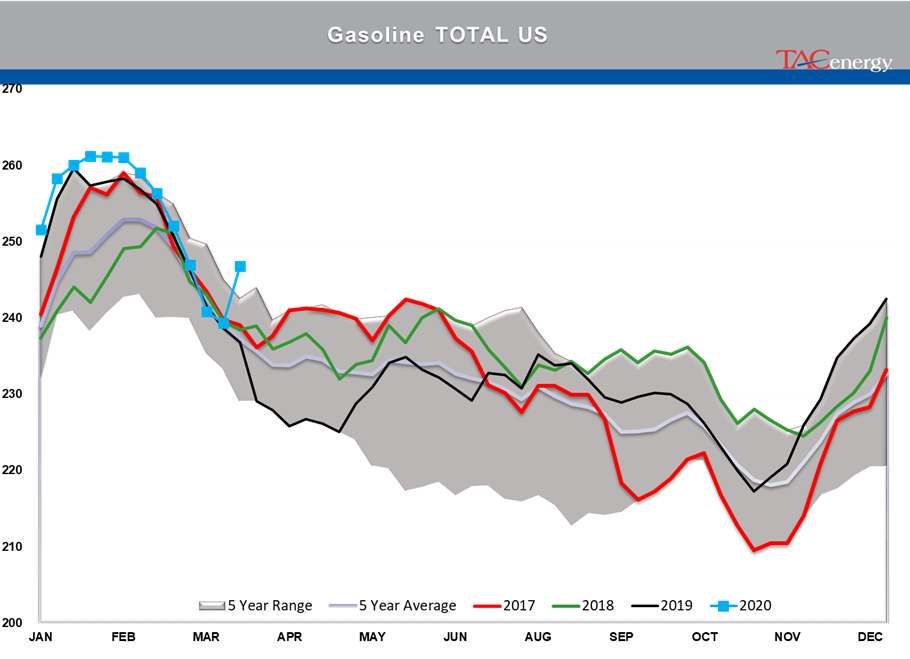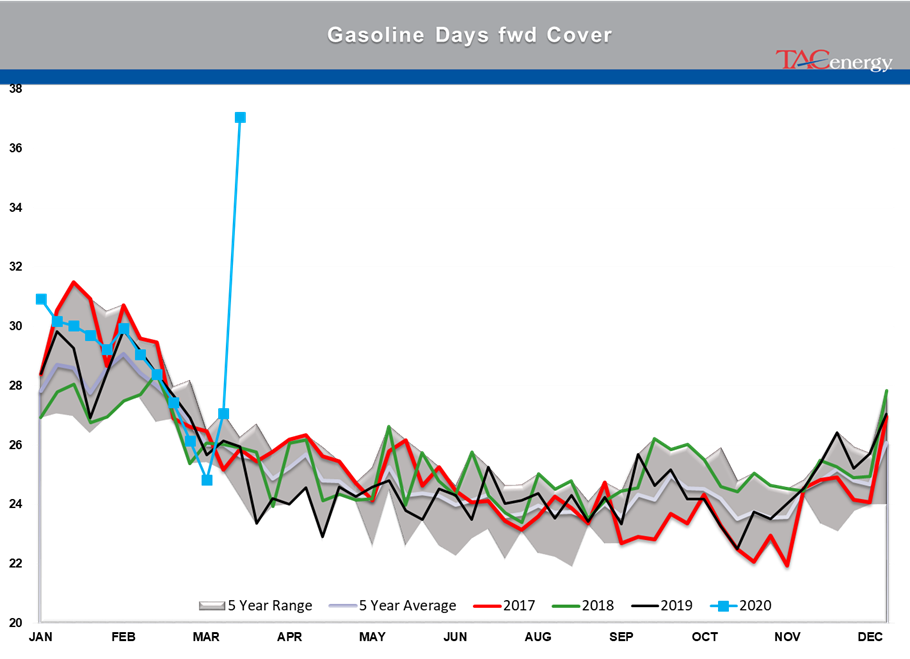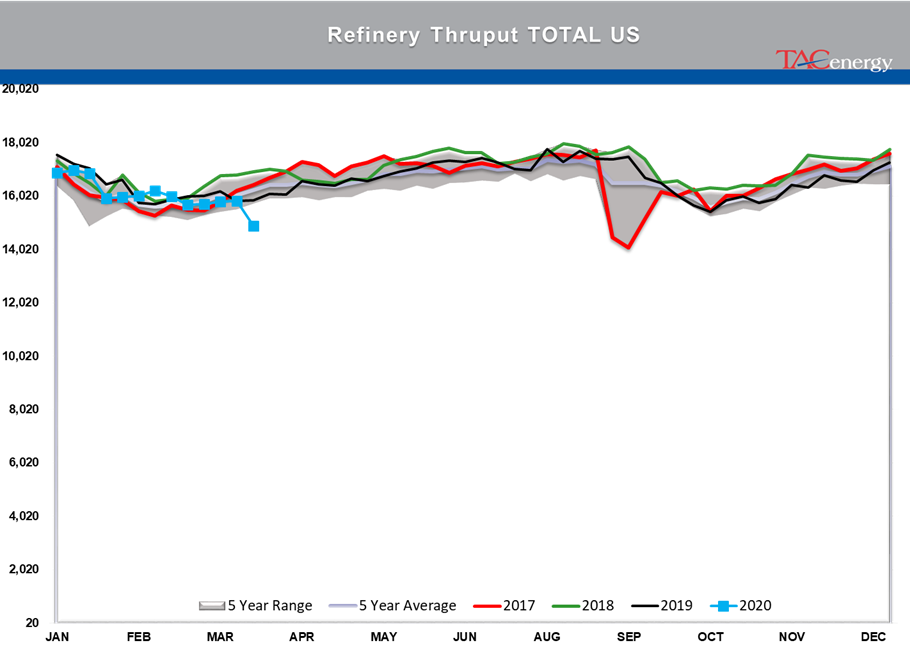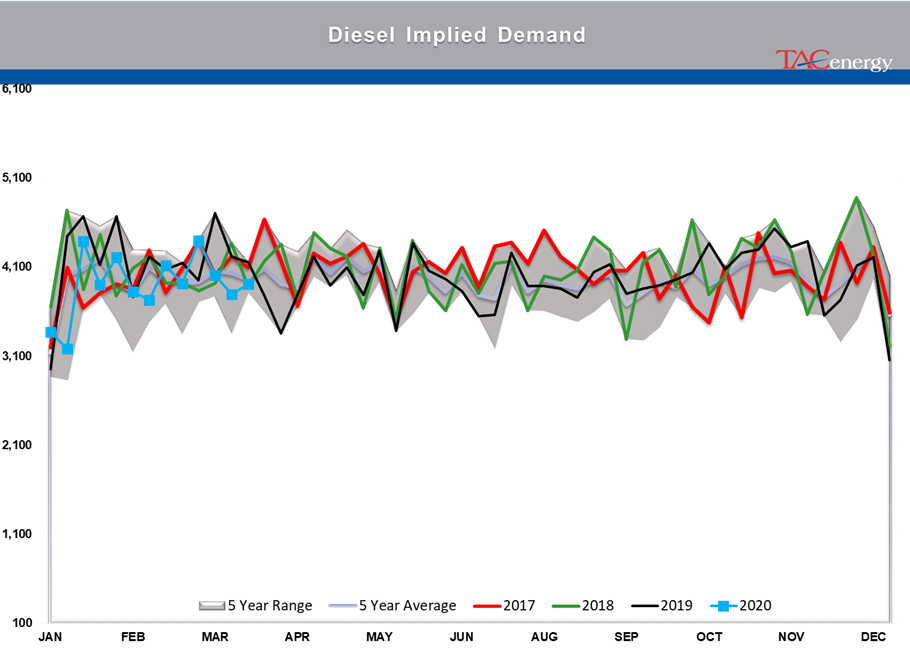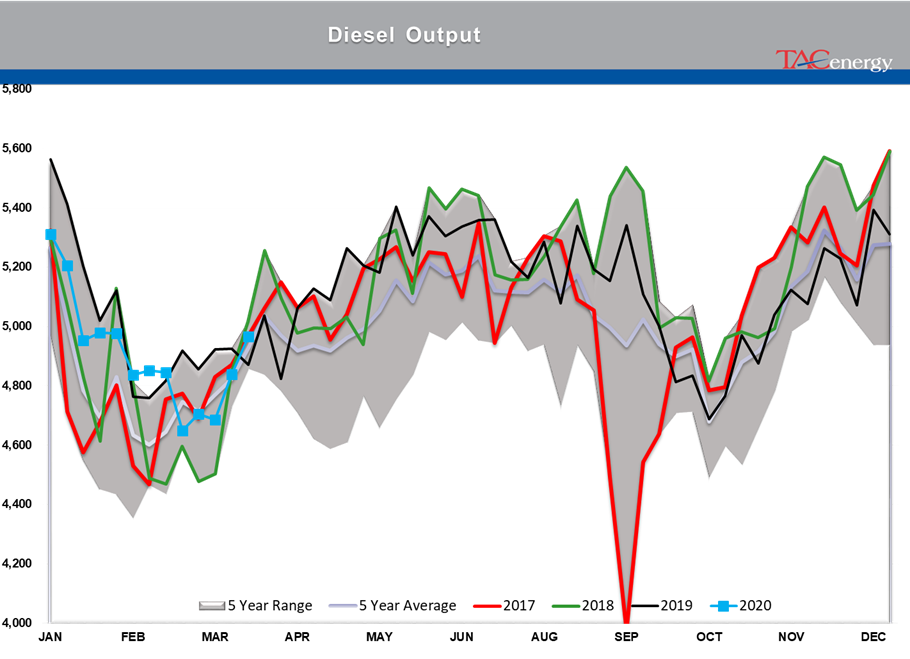Energy Prices Surge To Start Thursday's Session

Energy prices are surging to start Thursday’s session with both WTI and RBOB futures up more than 10 percent in the early going, following statements from the U.S. President that Russia and Saudi Arabia would be discussing options to stabilize the market. If you need a reason to sell this latest bounce, note the lack of news from either of those countries so far.
In addition to the emergency meeting rumored between Russia and Saudi Arabia, the White House is said to be working with industry leaders on measures to help them survive the storm. Ideas such as leasing out the 70+ million barrels of storage in the SPR, and issuing Jones Act waivers are making rounds, in addition to the various EPA waivers already enacted to help solve this most challenging logistical puzzle. The industry has been forced to get creative to reduce supply without shutting their doors.
The DOE report was full of big numbers that suddenly feel ordinary in this unusual environment. U.S. oil stocks rose by the second largest amount on record, with more than 13 million barrels on the week. It’s worth pointing out that it was during this same week three years ago that U.S. oil stocks reached their all-time high, some 65 million barrels above current levels.
Gasoline demand fell nearly 25 percent (2.2 million barrels/day) on the week according to the DOE’s weekly estimate, and based on data from sales over the past several days, it’s likely we could see another similar decline in next week’s report. For perspective, that decline is nearly twice as big as the previous weekly record set over the Christmas holiday week in 2016. This is more than one million barrels/day - more than the third biggest drop on record set in the week after September 11.
Diesel demand remained robust last week, as an uptick in delivery and distribution demand offset the drop in buses and other commercial vehicles on the road. This weak gasoline, strong diesel phenomenon is starting to create situations in a handful of markets nationwide. Refiners are forced to cut runs due to gasoline containment issues, creating an unintended shortage in distillate supply. Diesel prices have not been reacting much to the reality at the terminal level. ULSD futures reached a new four-year low Wednesday, as refinery’s maxing diesel output and a demand slowdown both appear inevitable in April.
The bankruptcies are starting in the oil patch, with many more predicted as oil producers' only calculations these days are whether it’s cheaper to shut in their operations – which isn’t as easy as flipping a switch – or continue at minimum rates and hope the shelter-in-place orders end in a month.
Click here to download a PDF of today's TACenergy Market Talk.
Latest Posts
Gasoline Futures Are Leading The Way Lower This Morning
The Sell-Off Continues In Energy Markets, RBOB Gasoline Futures Are Now Down Nearly 13 Cents In The Past Two Days
Week 15 - US DOE Inventory Recap
Prices To Lease Space On Colonial’s Main Gasoline Line Continue To Rally This Week
Social Media
News & Views
View All
Gasoline Futures Are Leading The Way Lower This Morning
It was a volatile night for markets around the world as Israel reportedly launched a direct strike against Iran. Many global markets, from equities to currencies to commodities saw big swings as traders initially braced for the worst, then reversed course rapidly once Iran indicated that it was not planning to retaliate. Refined products spiked following the initial reports, with ULSD futures up 11 cents and RBOB up 7 at their highest, only to reverse to losses this morning. Equities saw similar moves in reverse overnight as a flight to safety trade soon gave way to a sigh of relief recovery.
Gasoline futures are leading the way lower this morning, adding to the argument that we may have seen the spring peak in prices a week ago, unless some actual disruption pops up in the coming weeks. The longer term up-trend is still intact and sets a near-term target to the downside roughly 9 cents below current values. ULSD meanwhile is just a nickel away from setting new lows for the year, which would open up a technical trap door for prices to slide another 30 cents as we move towards summer.
A Reuters report this morning suggests that the EPA is ready to announce another temporary waiver of smog-prevention rules that will allow E15 sales this summer as political winds continue to prove stronger than any legitimate environmental agenda. RIN prices had stabilized around 45 cents/RIN for D4 and D6 credits this week and are already trading a penny lower following this report.
Delek’s Big Spring refinery reported maintenance on an FCC unit that would require 3 days of work. That facility, along with several others across TX, have had numerous issues ever since the deep freeze events in 2021 and 2024 did widespread damage. Meanwhile, overnight storms across the Midwest caused at least one terminal to be knocked offline in the St. Louis area, but so far no refinery upsets have been reported.
Meanwhile, in Russia: Refiners are apparently installing anti-drone nets to protect their facilities since apparently their sling shots stopped working.
Click here to download a PDF of today's TACenergy Market Talk.

The Sell-Off Continues In Energy Markets, RBOB Gasoline Futures Are Now Down Nearly 13 Cents In The Past Two Days
The sell-off continues in energy markets. RBOB gasoline futures are now down nearly 13 cents in the past two days, and have fallen 16 cents from a week ago, leading to questions about whether or not we’ve seen the seasonal peak in gasoline prices. ULSD futures are also coming under heavy selling pressure, dropping 15 cents so far this week and are trading at their lowest level since January 3rd.
The drop on the weekly chart certainly takes away the upside momentum for gasoline that still favored a run at the $3 mark just a few days ago, but the longer term up-trend that helped propel a 90-cent increase since mid-December is still intact as long as prices stay above the $2.60 mark for the next week. If diesel prices break below $2.50 there’s a strong possibility that we see another 30 cent price drop in the next couple of weeks.
An unwind of long positions after Iran’s attack on Israel was swatted out of the sky without further escalation (so far anyway) and reports that Russia is resuming refinery runs, both seeming to be contributing factors to the sharp pullback in prices.
Along with the uncertainty about where the next attacks may or may not occur, and if they will have any meaningful impact on supply, come no shortage of rumors about potential SPR releases or how OPEC might respond to the crisis. The only thing that’s certain at this point, is that there’s much more spare capacity for both oil production and refining now than there was 2 years ago, which seems to be helping keep a lid on prices despite so much tension.
In addition, for those that remember the chaos in oil markets 50 years ago sparked by similar events in and around Israel, read this note from the NY Times on why things are different this time around.
The DOE’s weekly status report was largely ignored in the midst of the big sell-off Wednesday, with few noteworthy items in the report.
Diesel demand did see a strong recovery from last week’s throwaway figure that proves the vulnerability of the weekly estimates, particularly the week after a holiday, but that did nothing to slow the sell-off in ULSD futures.
Perhaps the biggest next of the week was that the agency made its seasonal changes to nameplate refining capacity as facilities emerged from their spring maintenance.
PADD 2 saw an increase of 36mb/day, and PADD 3 increased by 72mb/day, both of which set new records for regional capacity. PADD 5 meanwhile continued its slow-motion decline, losing another 30mb/day of capacity as California’s war of attrition against the industry continues. It’s worth noting that given the glacial pace of EIA reporting on the topic, we’re unlikely to see the impact of Rodeo’s conversion in the official numbers until next year.
Speaking of which, if you believe the PADD 5 diesel chart below that suggests the region is running out of the fuel, when in fact there’s an excess in most local markets, you haven’t been paying attention. Gasoline inventories on the West Coast however do appear consistent with reality as less refining output and a lack of resupply options both continue to create headaches for suppliers.

